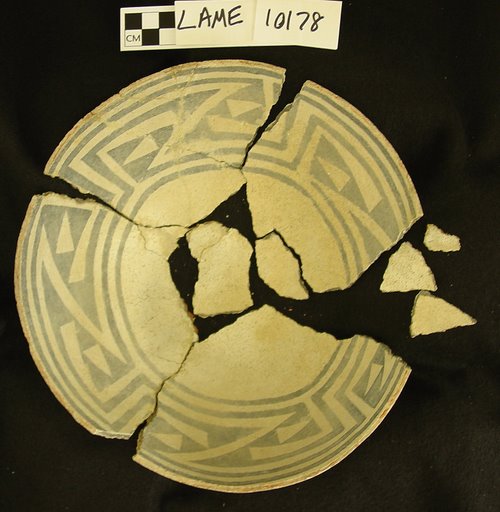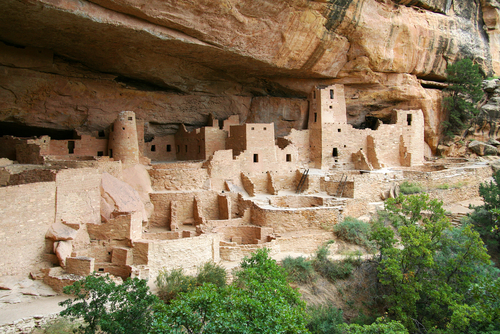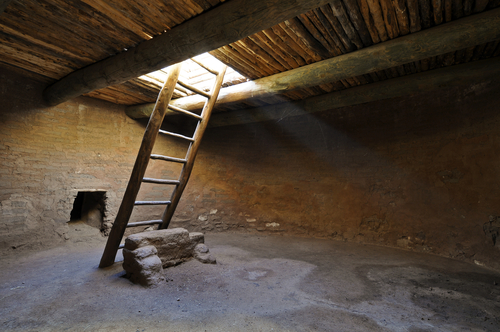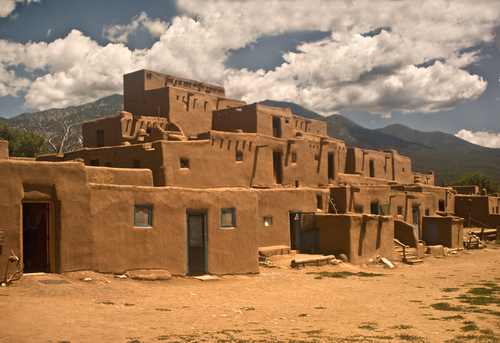Prehistoric and History Page 1
|
|
Although the "Puebloan people" come from diverse backgrounds, and even speak different languages from one another, all can trace their history in the American Southwest back to at least the time of Christ. Their archaeological predecessors are popularly known as the Anasazi or Mogollon, though most Native Americans prefer the term "Ancestral Puebloan" for these people. Archaeologically, the Puebloan culture is recognized by the presence of three traits: (a) a dependence on agriculture (primarily corn); (b) the use of a similar architectural style, and (c) the production and use of what is often intricately painted pottery.
|
|
A black-on-white bowl dating to about A.D. 1100, recovered from a puebloan archaeological site located near Logandale, Nevada
|
|
|
Since at least 900 A.D., most prehistoric Puebloan people lived in above-ground, contiguous rooms. After about A.D. 1300, the people aggregated into large, often multi-storied apartment-style buildings in villages that housed 1000 or more people
|
|
|
|
Cliff Palace, an Ancestral Puebloan ruin dating to the early 13th century A.D. in southwestern Colorado Source - Shutterstock Image ID:130869356 |
|
|
Along major rivers where water was plentiful, these houses tended to be constructed of adobe, but elsewhere they might be constructed of sandstone slabs or other rock. They also had semi-subterranean structures, termed kivas, that functioned as religious chambers
|
|
Prehistoric kiva, after excavation. Source - Shutterstock #Image ID:55035286
|
|
|
|
|
|
Reconstructed kiva interior Source - Shutterstock Image ID:39205027 |
|
|
When the Spanish arrived, they found approximately 40,000 Puebloan people living in about 90 villages. (Today, about 30 of these villages survive). As did their prehistoric predecessors, the historic Pueblo Indians lived in apartment-style structures; grew corn, beans, squash and tobacco; made pottery; and conducted ritual activities in kivas. |
|
|
|
Toas Pueblo, one of the Puebloan villages encountered by the Spaniards that is still occupied today. Source - Shutterstock Image ID:60190786 |
|
Because they lived in aggregated villages, the Spaniards called them "puebloans," which is Spanish for "town-dweller." Soon after contact, most pueboan villages received title to their land from the Spanish crown through land grants, which continue to be recognized today by the U.S. government. Thus, unlike some tribes, the Puebloan people largely live in the same areas as they did at contact (and even into prehistory).
|
|
Click next page to continue.



.jpg)

